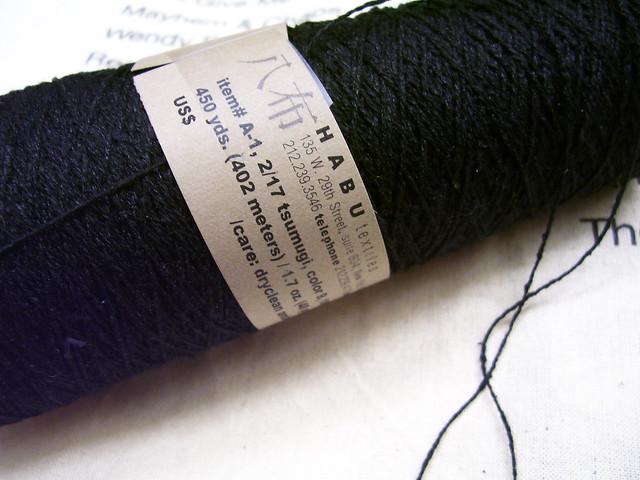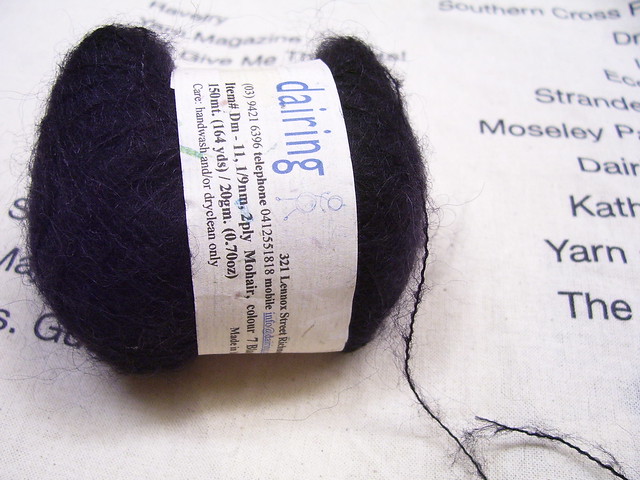On the other hand, I finished another piece early this week and it was catching my thoughts and eye every time I passed it on the back of the desk chair, waiting patiently for it's photographs. So today we'll go with the flow and digress the conversation from colourwork and move to textures.
Back in the era when novelty yarns were experiencing such popularity
they were carried everywhere including supermarkets and $2 shops, and you could
almost count on seeing scarves adorning the necks of at least half a dozen
people passing by, texture in relation
to knitting was almost a dirty word.
Me, I love textures. I like
watching how different textural elements combine; how they throw off light and
shade; how they sit next to each other and interplay. The juxtaposition of soft and hard, geometric
and organic, and the dimensions they lend a knitted piece, are all very
interesting concepts to me.
Texture can obviously be experienced via several modes such as stitch
patterns like lace, cables, and rib variations – and it can also be created
using yarns. The novelty yarns really have a lot to answer for, as far as the bad rap texture has had over the years because when you think about it,
everything we knit even if it’s completely plain stocking stitch, has a
texture so it's not really something unusual about knitting, or even that remarkable. From the halos of mohair and alpaca, to slubby tweeds and smooth merino yarns, and then the large range of plant-based fibres with their variance of smooth through to almost jute-like final fabrics, there is an inherent texture.
It's a fine line between interesting and novelty though, so when I was trying to work out what to make with some Habu I've been saving I was particularly conscious of using the textures in the best way possible. When using different yarn bases to explore texture, I think a monochromatic palette is interesting. Taking colourplay out of the picture usually means other elements step to the forefront, much like using black and white for photography instead of full colour.
I’ve carried the particular yarns I chose for this project for 5 years, and kept them so
safely stored from potential harm that they have almost been enshrined in my
mind.
They were a decadent purchase at the time, on one of my early trips to
Bendigo Sheep & Wool Show in 2010. I purchased these three black yarns from
Dairing with the original idea being I would somehow entwine all three varying
textures into one ever-so-stylish scarf.
Despite many attempts, I never found the right vehicle for the trio.
Finally, via the impetus of The Summer of the Single Skein, I decided it was time and I sat
down with all three to really work out some potential ideas. After playing around with options it became apparent that to make it work one of the yarns might have to go, and the mohair was the most logical to be benched.
I’d attempted a Camomile earlier in the year using Isager yarns but
hadn’t been happy with the colour choices I’d made and couldn’t settle on an
acceptable alternative so I’d shelved the project.
Working with the Habu Paper Moire and Tsumugi as a combination
seemed like a good option to allow a revisit the pattern, and to overcome the
different meterage I had (paper moire 284m, tsumugi 411m) I logically decided the paper moire would be the yarn
that was dropped. To further show the
unique texture of the paper moire, I worked those rows in garter, and the
single tsumugi rows in stocking stitch.
There’s a delicate side to those little paper flutters of the paper moire, but the handle of both the yarn and the subsequent fabric is actually rather “crunchy”. One review on Ravelry compared it to steel wool, which I could relate to. It wasn't the most of pleasant textures to handle during the knitting, but pairing it with the tsumugi added some substance and tempered it slightly. Now that the piece is blocked, both yarns have relaxed into each other considerably also.
As the end crept closer, I was really hoping I will still have enough tsumugi to
do a modified edging. Thankfully, I did. In fact, I even have a modest amount left over, but at this stage no idea on what I could possibly use it for. Perhaps it will actually end up seeing the mohair in a mix somehow?
As I was knitting, I keep looking at the alternating stripes and there was a niggling
fear that I’d just replicated a fun fur shawl. I kept begging of people; just please don’t tell me it looks like Feathers?!
As with most laceweight knitting; it's amazing what a good block can do for it though.
(seriously though, don't tell me it looks like Feathers!)









5 comments:
I can officially inform you that you have escaped Feathers and Eyelash and made something beautiful and subtle. It is really lovely. I think it looks rather like a very delicate Victorian mourning shawl, the texture is very Victorian.
You have created such a delicate, beautiful project, it's almost art! Definitely not feathers
Melanie-Jade
Post a Comment